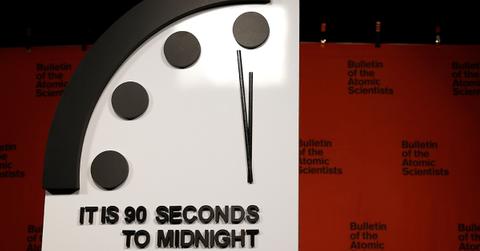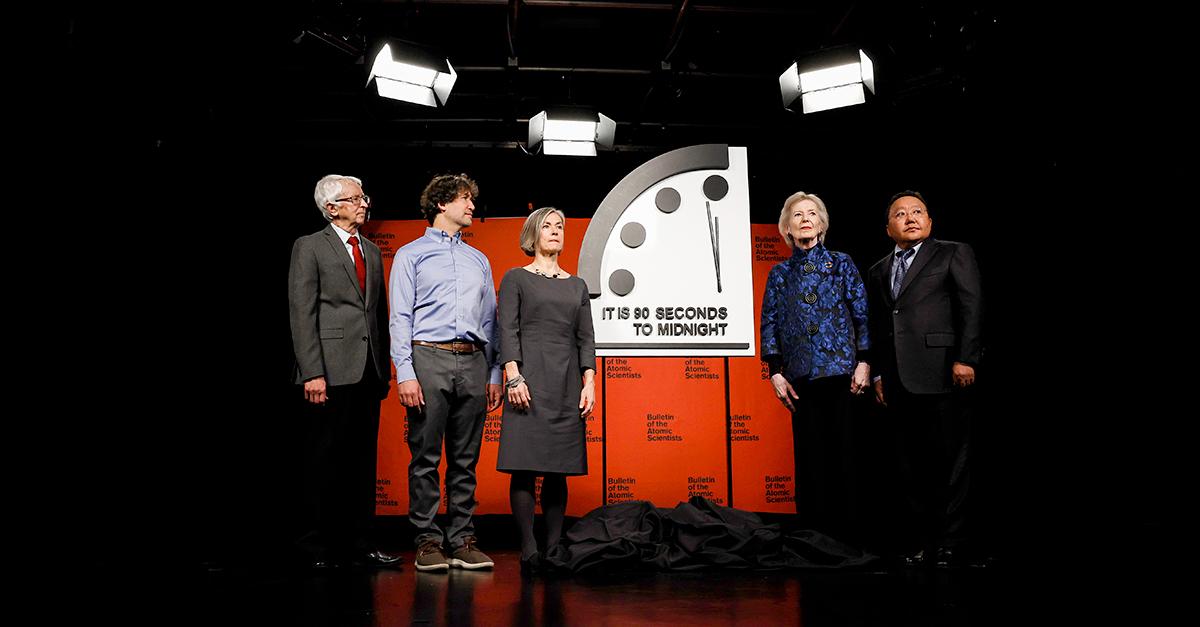The Doomsday Clock Is Now Closer to Midnight Than Ever Before — What That Means for Humanity
Published Dec. 15 2023, 3:07 p.m. ET

The Gist:
- The Doomsday Clock is a physical representation of humanity's proximity to devastation.
- As of this writing, the Clock is set at 90 seconds to midnight.
- The Clock is meant to be equal parts metaphor and call to action.
It's no secret that humanity's advancements in technology and industry have come at a heavy cost. As our population has grown and our needs and wants have expanded, our natural resources are being quickly used and our environment consistently suffers for it. Changes in our climate have become more and more drastic and if we don't act now, things will only become more dire for future generations and our planet will become irrevocably altered.
The thing is, we as a society already knew this decades ago. That's why the Doomsday Clock was implemented. In case you aren't aware, the Doomsday Clock is a visual representation of how close humanity is to its self-induced destruction thanks to troubling advancements in dangerous technologies. And much like Cinderella and her temporary spell of beauty, the last thing we want it to do is strike midnight. But what exactly happens when the Doomsday Clock actually strikes midnight?

The Doomsday Clock is more of a warning but it's a troubling one.
The Doomsday Clock was first created in 1947. Thanks in no small part to the creation of nuclear arms at the time, the threat of Earth's total annihilation by humanity's own hands became all too real. To represent this danger, the Doomsday Clock was implemented by the Bulletin of Atomic Scientists, which calculates the time on the Clock based on theoretical catastrophic disruptions.
While not a traditional time-tracking clock by any means, the Doomsday Clock is more of a metaphor meant to track how close we are to destroying our world via technology. Every year, the Bulletin sets the Clock to a different time. The closer the Clock gets to midnight, the closer the planet becomes to the point of no return.
The threat of nuclear destruction still looms over us to this day, which has since set the clock at mere minutes away from midnight. But thanks to the effects of greenhouse gases and pollution over the years, midnight on the Doomsday Clock is now closer than ever at 90 seconds to midnight.
To be clear, though, the world doesn't simply end as soon as the Doomsday Clock strikes midnight. Instead, midnight represents the point where the planet becomes damaged beyond repair and reaches the point of total annihilation. Scientific experts worry, however, that reaching midnight on the Doomsday Clock would send society into disarray.
Of course, humanity still has hope. The Doomsday Clock can be viewed as a call to action for people to do their part in aiding environmental repairs and reversing the effects of climate change. The Clock has been pushed away from midnight in the past, so there are opportunities for people to help achieve that same reversal.
But as always, it's never too soon for people and policymakers to change some of their destructive habits and ensure that the Doomsday Clock stays as far away from midnight as possible.